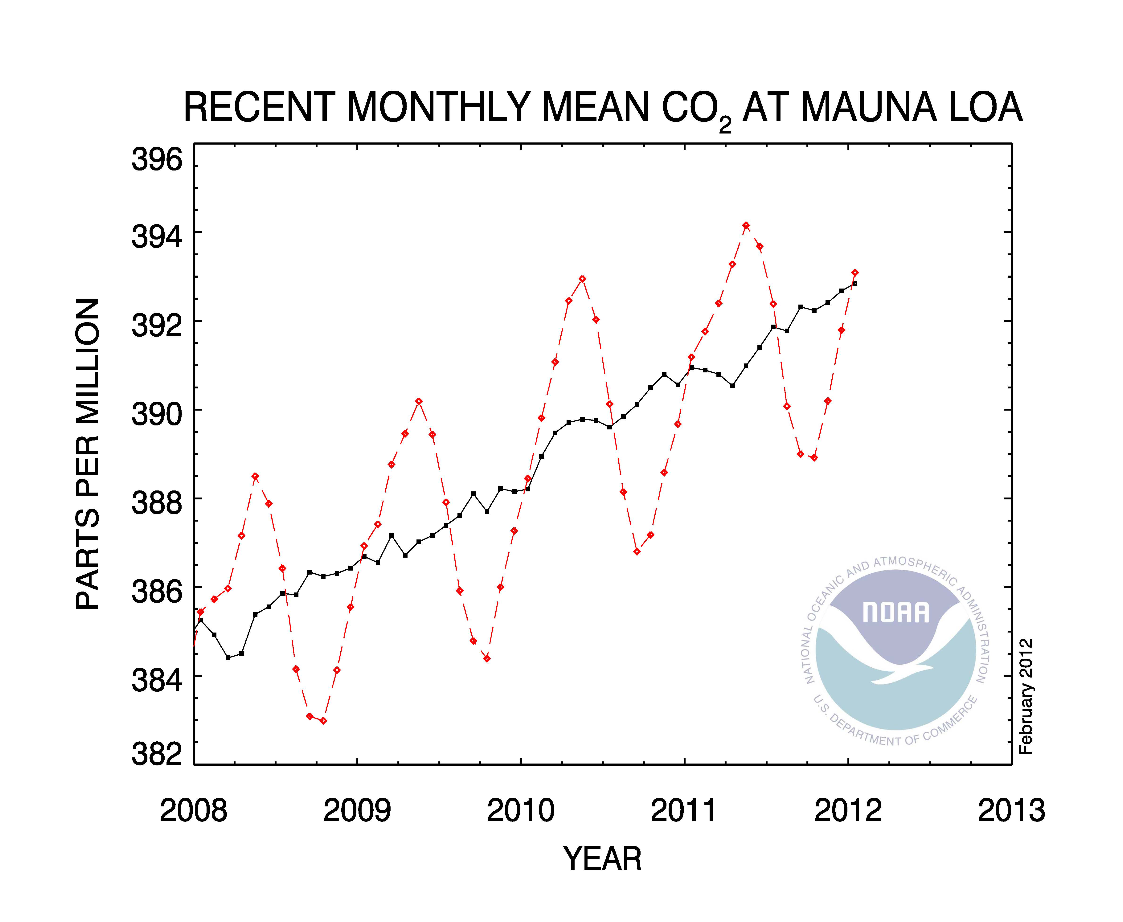Greenhouse Gases
The NIH recognizes reducing its carbon footprint aligns with its public health mission – preventing climate change will protect health. In an attempt to manage and reduce Greenhouse Gases (GHG), the NIH has assembled a comprehensive GHG inventory and quantified emissions associated with its activities, operations, services, and products. Click the link to learn more background on NIH's comprehensive greenhouse inventory.
Background
Energy from the sun drives Earth’s weather and climate. The Earth absorbs energy from the sun, and also radiates energy back into space; however, much of the energy going back to space is absorbed by “greenhouse gases” in the atmosphere (See Figure 1 Below). Without the natural greenhouse effect temperatures would be about 60°F lower, and life on Earth would not be possible.
Figure 1. Depicts the Greenhouse Gas Effect
What are Greenhouse Gases?
GHGs are gases in Earth’s atmosphere that prevent heat from escaping into space. The burning of fossil fuels, such as coal and oil, and deforestation has caused the concentration of GHGs to increase significantly in the Earth’s atmosphere. As this occurs, there is a possibility for an increase in global average temperature and related climate changes.
The greenhouse gases are emitted from NIH activities from the operation of NIH facilities and within NIH laboratories. The following table depicts sources for the various types of GHG NIH emits:
Molecule |
NIH Facility Source |
NIH Laboratory Source |
Carbon Dioxide (CO2) |
Combustion of fuel oil, natural gas, propane, and waste to produce heat and electricity |
Dry Ice for shipping precious specimens and CO2 for incubators |
Methane (CH4) |
Transport of fuel oil and natural gas |
NIH livestock |
Nitrous Oxide (N2O) |
Combustion of fuel oil, natural gas, propane, and waste to produce heat and electricity |
Tracer gas and inhalation anesthetic in medical, dental, and veterinary procedures |
Hydrofluorocarbons (HFC) |
HFC-134a fugitive emissions from chiller operation
|
Inhalation anesthetics (sevoflurane and isoflurane) and HFC-134a is used as a carrier as in Ethylene Oxide Sterilants |
Sulfur Hexafluoride (SF6) |
Dielectric used in the transmission of electricity |
Tracer gas in fume hoods, microbubbles as contrast agent in ultrasound equipment, treatment of retinal detachment by reinopexy |
Importance to the NIH Mission
The NIH has published a report that affirms the health impacts and identifies the research needs that “Climate change will endanger public health affecting all sectors of society, both domestically and globally.”

To Lean More Visit the Following Links:
Environmental Health Perspectives: What Does Climate Change Have to Do With Human Health?
An interview hosted by Ashley Ahearn with Dr. John Balbus from the National Institutes of Environmental Health Science discussing the challenges of attributing health effects to climate change. However, short-term fluctuations in weather can alter the risk of diseases, and as short-term diseases become long term patterns, health effects may adopt these new patterns.
NIH Launches research program to explore health effects from climate change
Climate Change and Human Health
Atmospheric Carbon Dioxide Monitoring
The atmospheric carbon dioxide concentration is monitored at the National Oceanic Atmospheric Administration's (NOAA) Mauna Loa Observatory. Recent trends in recently monthly mean carbon dioxide concentration is indicated by the following graph.

In the above figure, the dashed red line with diamonds symbols represents teh monthly mean values, centered on teh middle of each month. The black line with square symbols represents the same, after correction for the average seasonal cycle.
From January 2011 to January 2012, the atmospheric carbon dioxide concentration increased from 391.19 parts per million (ppm) to 393.09 ppm. While the NIH does not endorse the study "Target Atmospheric CO2: Where Should Humanity Aim?", some scientist have indicated the upper safety limit for atmospheric CO2 is 350 ppm. Click the link to learn more about NIH's efforts to reduce its carbon footprint.
If you have any further questions?
Contact:
Leo Angelo M. Gumapas, PE
Greenhouse Gas Program Manager
Environmental Engineer
(301) 402-7871
leoangelo.gumapas@nih.gov